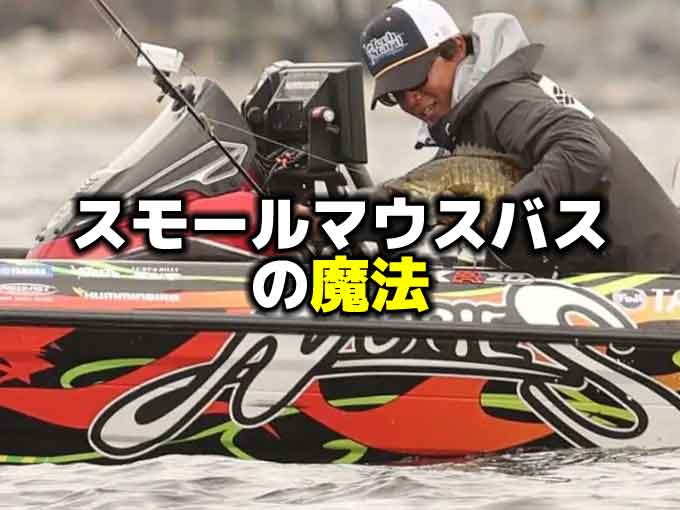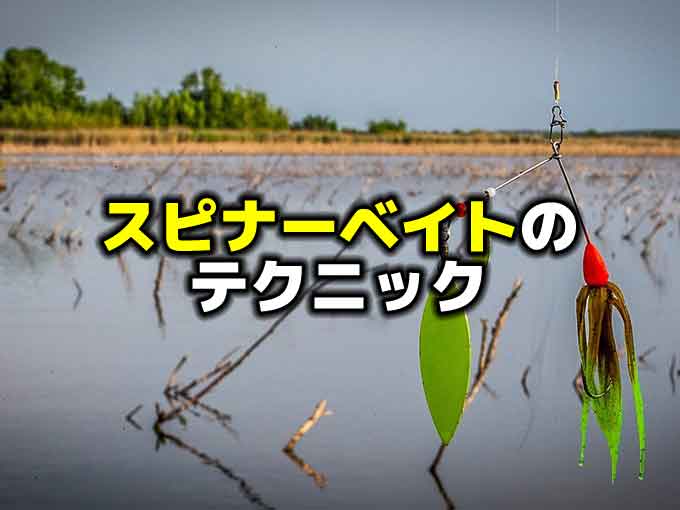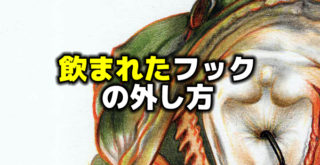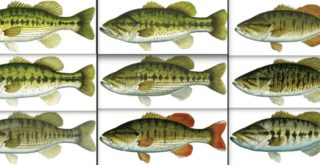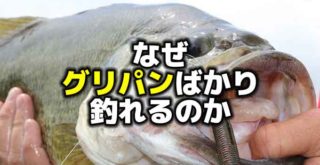バス釣りにとって橋の存在とは

Image by in-fisherman.com
こんにちは!店長の小山です!
本日は海外サイトより、”Fishing Bridges for Bass”という記事を引用してご紹介いたします。
引用先:in-fisherman.com”Fishing Bridges for Bass”by David Brown – March 22, 2018(海外サイトです)
バス釣りの経験がある程度多くなってくると、好みというものが出てきますよね。
タックルの好み、ルアーの好み、釣り方の好み・・・などなど、釣れるという確信がなくとも、好きなものを使ったり好きな釣り方で釣っていると、それだけで釣れる気がしてくるものです。
他に好みが分かれること、それには、ポイントというものがあるでしょう。
オーバーハングが好きな方、ブッシュが好きな方、岬が好きな方、フラットが好きな方、ハードボトムが好きな方、マンメイドストラクチャーが好きな方…これにも本当に様々な好みがあり、そういうポイントを見つけただけで嬉しくなることもあるのではないでしょうか。
そのなかでも、多くの方が好きなのではないかと思われるポイントのひとつに、「橋」があると思います。
色々なフィールドに橋は架かっていることがあるのですが、ボートでもオカッパリでも、常にアングラーがいると思います。人気があるということには理由がありまして、それはもちろん、釣れるからですよね。
この記事は、アメリカのゲームフィッシング専門メディア「In-Fisherman」の記事で、記者のデビッド・ブラウン氏が、何名かのバスプロに橋について取材しています。
各バスプロの方々も、それぞれ橋に対する魅力を持っているようですが、面白いことに、その意見には色々あるようです。
同じ橋といっても色々あるからだと思いますが、とても興味深い話だと思います。ぜひ読んでみてください。
橋の特徴と釣り方を分析する
According to savvy pro Mike Iaconelli, these manmade structures linking one land mass with another typically are reliable, but often changeable in their conditions. Tapping their potential can demand an open mind and an array of presentations.
During a recent outing, the 2003 Bassmaster Classic champion pointed out the low creek channel bridges on the reservoir we were fishing and shared his thoughts on the appeal of these fish magnets.
“I approach a bridge the same way I consider other types of structure and cover, whether a flat, creek channel, or lily pad field," the Bassmaster Elite pro says. “I look for differences things that stand out and might be attractive to bass, and what characteristics are liable to change."
Scanning the bridge before us, he began to calculate the path of the creek channel beneath the structure and where breaklines indicated sharper drops. He also sought to identify key elements of this substantial structure from a bass’ perspective. “I consider its pilings," he says, “which are key vertical components. On this bridge, most are round and concrete, but in the center there are a couple of metal ones. Such variation can affect bass location.
“Note overhanging trees, brushpiles, or construction debris near the pilings, or a drain pipe flowing near the bridge. And don’t overlook the sun’s angle and intensity. No matter how large or modest the structure, it will project a shadow on either side once the sun gets high."
John Murray, a Bassmaster Elite pro formerly from Arizona before relocating to Tennessee, notes that bass may treat a prominent shade line like a hard edge; a boundary from which to ambush preyfish. “Bass may relate to that shadow line as much as to pilings or rocky banks," he says.
Western pro Matt Newman, who also owns the iRods rod company, says he typically starts by fishing bridges on the shady sides of shallower pilings. He also looks for pilings that have extra support beams below the surface. And he may time his visits to make sure a bridge’s most promising sections are in the shade, depending on sun angle and bridge shape.
“Bridges produce sharp shade lines that extend below the surface, so you have to extrapolate where the shade may extend into deeper water, depending on water clarity," Newman says. “Mid-morning can be great because bass may be herded into a small area, making them more competitive and easier to target."
経験豊富なプロのマイク・アイコネリによると、陸地と陸地を結ぶこのマンメイドストラクチャーは、信頼性のあるポイントですが、状況によって変わることがよくあるとのことです。その可能性を引き出すには、オープンマインドで多数のプレゼンテーションをするということのようです。
最近の釣行でのことについて彼は、リザーバーの浅いクリークチャンネルに架かる橋で釣ったことを例に、この橋という魚を寄せる磁石の魅力について彼の考えを話してくれました。
「私はフラット、クリークチャンネル、リリーパッドなどの他のストラクチャーやカバーと同じように考えて橋にアプローチしています。目に見える変化、バスにとって魅力的と思えるもの、そして何かの特徴などを探します。」
その橋についての分析が終わると、彼はその下に広がるクリークチャンネルの通り方、ブレイクライン、急なブレイクの場所を読み始めました。彼はまた、バスの視点に立ってこのストラクチャーの重要な要素を特定しようとします。 「私はこの橋脚について考えます。それは重要な縦ストラクチャーという要素です。この橋を見ると、大部分は円形でコンクリートで出来ています、しかし中央には金属製のものが何本かあります。」
「橋脚の近くにあるオーバーハング、オダ、建築資材、または橋の近くにある排水管の流れ出しなどに注意してください。太陽の角度や強さも見落とさないでください。どんなに大きいか、どんなに小さいストラクチャーかに関わらず、太陽が昇ればどちらかに影が落ちるはずです。」
アリゾナ出身のバスマスターエリートのプロであるジョン・マレーは、バスはくっきりとしたシェードラインを変化の境界線としてみているかもしれないと述べています。魚を食べるために待ち伏せするための境界です。 「バスは橋脚や岩の多いバンクでも同じように影の線を利用しているかもしれません。」と彼は言います。
同じくiRodsロッドカンパニーのオーナーであり西部のプロ、マット・ニューマンは通常、橋では浅い側の橋脚の影がある側から釣り始めると言います。彼はまた、水面下に梁(はり=横方向の補助柱)がある橋脚を探します。そして彼は、太陽の角度や橋の形状によっては、その橋で最もいいと思われる場所が日陰になるタイミングを見計らって、その時間に来れるようにするようです。
「橋は水面下に伸びる鋭いシェードラインを生み出すので、水の透明度によっては、影が水中の深い方へ伸びている場所を推測する必要があります。 それによりバスは狭いエリアに集められるため、午前中がアツいです。さらにそれにより競争本能が働くため、より狙って釣りやすくなります。」
流れを味方に
FLW Tour pro Dennis Tietje knows that while bridges can hold bass at any time of year, their value typically increases in colder periods. “Typically, baitfish such as shad start balling up in fall and remain tightly grouped into early spring," he says. “Bridges serve as pinch points so schools of baitfish that head up creeks in the fall get funneled through a tight area. If there’s much flow, the pilings create a current break and bass position on the downcurrent side to ambush their prey as they pass.
“In lakes and reservoirs, current direction is consistent, but in tidal waters, like back home in Louisiana, that changes twice a day. Bass may be on the south side of the bridge in the morning, and on the north side in the afternoon. Paying attention to the tide schedule and current flow is critical there."
FLWツアープロのデニス・ティエテは、橋は1年中いつでもバスが付きますが、それは寒い時期に増えると考えています。 「通常、シャッドなどのベイトフィッシュは秋に群れを作り始め、春先までにはよりギュッとタイトな群れになります。 橋は幅の狭まった地点に架けられているため、秋にクリークを上るベイトフィッシュの群れはその狭いエリアを通過することになります。流れが多い場合、橋脚は通過する獲物を待ち伏せするためのカレントブレイク(流れを遮るもの)としてバスの居場所を作ります。
「湖やリザーバーでは、流れの方向性は一致していますが、ルイジアナリバーのようなタイダルリバーでは、1日に2回変化が起きます。バスは、朝は橋の南側、午後は北側にいたりします。 潮の干満のスケジュールによる流れに注意を払うことがそこでは重要です。」

Image by in-fisherman.com
その他、橋の特徴として以下のようなことが挙げられます。
突き出し
Mississippi angler Todd Witt spends plenty of time working pilings, but he’s also fond of the riprap embankments bolstering bridge causeways. Along this rocky habitat, he looks for irregularities; specifically jutouts created by rock slides. A few chunks sticking out farther offer natural ambush points that bass use to intercept shad moving along the edges.
ミシシッピ州のアングラー、トッド・ウィットは橋脚での釣りに多くの時間を費やしていますが、彼はまた、橋の土手を補強するためのリップラップが好きです。 この岩の住みかの中に、不規則性を探していきます。 具体的には岩が流されてできた突出部です。 岩が突き出ていることによって、リップラップ沿いに移動するベイトフィッシュの立ち止まる場所となり、バスがそこを待ち伏せ地点として利用します。
リップラップの角
Keith Combs, Bassmaster Elite pro from Texas, pays particular attention to where a riprap shoreline comes to a point and turns toward the bridge pilings. Another corner exists where the riprap meets the natural bottom. Both, Combs says, direct baitfish movements and thereby attract opportunistic bass.
テキサス出身のバスマスター・エリートプロであるキース・コームズは、ショアラインのリップラップがどのあたりで橋脚に向かって向きを変えて岬状になっているかに注意を払います。 そこには、人工的なリップラップと元々の自然のボトムとの境い目というもうひとつのコーナーが存在します。 両方とも、ベイトフィッシュの動きを左右し、それにより気まぐれなバスをも引き付けると、コームズは言います。
穴と排水口チャンネル
The scour holes formed by storm drains or culverts that run under a bridge causeway offer depth changes that bass like, since they create a channel as they flow in. And when water’s flowing, its concentrated current and the food that may be flushed down it make it a key spot.
嵐や台風で橋脚にできた穴(ブリッジホール)や橋の下を通る排水口は、深さの変化となり、流れにも変化をもたらすためバスが好みます。そして水が流れることで、その流れによって流されてくる食物に集中できるため、重要なスポットとなります。

アプローチ方法
Iaconelli describes his bridge presentation strategy as a “one-two punch." Power-fishing comes first as he seeks the bigger and more aggressive fish that occasionally inhabit bridges. When the action wanes, he sweeps through with finesse rigs to tempt a few extra bites.
“For power-fishing, a crankbait, jerkbait, and spinnerbait are my top choices," he says. “I fish them on all the key areas, but before I leave, I grab a spinning rod and fish a shakyhead worm, a wacky rig, and a finesse swimbait."
アイコネリは橋へのプレゼンテーションのことを「連続技」と表現しています。 橋についているより大きくてよりアグレッシブなバスを探すため、まずはパワーフィッシングで釣ります。 それが弱まると、更なるバイトを求めてフィネスリグで探ります。
「パワーフィッシングでは、クランクベイト、ジャークベイト、スピナーベイトが私の一番の選択になります。 重要なポイントではすべてそれらで釣りますが、移動する前に、スピニングロッドを手に取り、シェイキーヘッドワーム、ワッキーリグ、フィネススイムベイトで釣ります。」
あらゆる角度で
FLW Tour pro Cody Meyer is a fan of drop-shot rigs, but he notes that complacency can cause you to miss opportunities. To maximize his bridge efforts, the California angler varies his presentations to give the fish multiple looks. Rigging a Strike King KVD Dream Shot, Meyer starts by making a long cast past a piling, then letting the rig pendulum down on a semi-slack line through the water column to reach suspended bass. Varying his cast length enables him to probe a range of depths as his bait passes along the pilings.
He also makes a pitching presentation to the piling corners, particularly the downcurrent points where bass hold to attack passing prey. For his final look, he moves in tight and makes a vertical drop right along the piling. Often his lure gets nailed on the way down, but he also fishes it on the bottom, shaking the lure in place before moving on.
FLW ツアープロのコビー・メイヤーはダウンショットリグのファンですが、彼は油断するとチャンスを逃す可能性があると言っています。 橋での努力を最大にするために、魚に複数の見た目を与えるためにプレゼンテーションを変えていきます。 ストライクキングKVDドリームショットをダウンショットにして、橋脚を超えるロングキャストを行い、次にリグを張らず緩めずのカーブフォールでサスペンドバスにアプローチします。 キャストの距離を変えることによって橋脚を通る時のレンジを調節して探ることを可能にします。
彼はまた、橋脚の下流側の角で通りかかった獲物を攻撃するために待ち伏せしていそうなところへピッチングでプレゼンテーションを行います。 最終的には橋脚にぴったりと寄り添い、橋脚沿いに真下へ向かって落として探っていきます。多くの場合、ルアーのフォール中に食ってきますが、移動する前にはルアーを一点シェイクするボトムの釣りもします。
あえて引っ掛ける
Murray leverages bridge current to create a novel look with his drop-shot. Casting across a piling’s upcurrent side, he intentionally hangs the rig on the piling’s uneven surface and drifts back just enough to keep his rig pinned on the algae-laden surface where it resembles a feeding baitfish.
For this trick, he favors a braid mainline and concentrates on boat control. A combination of skillful trolling motor work and the occasional push-off keeps him in position to maintain the right angle for his drop-shot ruse, as well as the ability to quickly pull a fish away from the structure before it can cut back across the angled column.
マレーはダウンショットで斬新な見た目を作りだすために橋の流れを活用しています。 橋脚の上流側を横切るようにキャストし、意図的に水面下の橋脚にリグを引っかけ、そしてそれを下流へドリフトさせ、餌を摂るベイトフィッシュに似せてウィードのある表層付近を通るようにします。
このテクニックをするため、彼はメインラインにPEラインを好み、ボートコントロールに集中しています。 巧みなエレキワークと時折のスイミングの組み合わせにより、彼はドロップショット戦略の理想の角度をキープし、それはまた釣れた時に橋脚に擦られる前にストラクチャーから素早く魚を引き離すことにもつながります。
シェイクが有効
When Elite pro Brent Ehrler tries to get suspended bass to bite, he has great faith in the workhorse of finesse fishing a wacky rig. He’s partial to a 5-inch green pumpkin Senko, but if the fish play hard-to-get, he shifts gears and rigs the slender Pro Senko on a Boss Shaky Head. A 1/8-ounce head works for depths to 15 feet, while a 1/4-ouncer gets the call for deeper spots.
エリートプロのブレント・エーラーがサスペンドバスからバイトを得ようとするとき、ワッキーリグによるフィネスフィッシングに絶大な信頼を寄せています。彼はヤマセンコーの5インチのグリーンパンプキンが大好きですが、釣るのが厳しいと感じた場合は、スレンダープロセンコーのシェイキーヘッドリグにシフトします。 水深4.5メートルまでは1/8オンスヘッドで、それより深い場合は1/4オンスを使います。
上から下へ
If bass around bridge pilings snub a drop-shot rig and wacky worm, Meyer shows them something they don’t often see. He rigs a Strike King Structure Bug or Swimming Shiner on an Owner Jig Rig comprised of a 3/0 EWG hook linked to a free-swinging 3/16-ounce streamlined weight.
He makes a short cast to the piling and lets the weight pull the lure along the face. If it falls untouched, he briefly works the rig along the bottom near the base of the piling. This flexible rig allows the lure and hook to stand horizontally, unlike the more vertical profile of a jig or shaky head.
橋脚周りのバスがダウンショットリグやワッキーワームに見向きもしない場合、メイヤーはバスがあまり見慣れていないものを見せるようにします。 彼はストライクキングストラクチャーバグやスイミングシャイナーをジカリグにし、3/16オンスの自由度の高い流線型のシンカーに3/0のエクストラワイドゲイプのフックで構成されています。
彼は橋脚にショートキャストをし、シンカーが橋脚の面に沿ってワームを引っ張るようにフォールさせます。 何もなくボトムまでフォールした場合は、橋脚の根元近くのボトムに沿ってリグを適当に動かします。 この自由度の高いリグは、ジグやシェイキーヘッドのような垂直に立つような見た目のものとは異なり、ワームやフックを水平にさせることを可能にします。
ピンポイントを狙う
On the jutouts Witt seeks, or any other noticeable targets such as construction rubble, brush, logs, or wads of grass washed against riprap or shallow pilings, pitching jigs or Texas-rigged plastics sometimes earns another bite or two.
リップラップの突き出しを狙う場合、ウィット氏は、例えば建設時の捨て石、オダ、丸太、またリップラップやシャローの橋脚に向かって生える濃い草のような他の要素を注意深く探し、ジグやテキサスリグをピッチングで撃っていき、いくつかのバイトを生み出します。
リアクション要素
Amid your bridge crankbait selection, don’t overlook lipless baits. Especially in fall, FLW Tour pro Casey Martin knows that a Rat-L-Trap can work wonders when traced along pilings and in the gaps where current seams form. These sinking lures work just below the surface and down into bridge holes.
橋でのクランクベイトを選ぶとき、バイブレーションプラグを見逃してはいけません。 特に秋、FLWツアープロのケーシー・マーティンは、ラトルトラップが橋脚沿いや流れの境い目ができているところで良い働きをすることを知っています。 こういったシンキングルアーは水面直下からブリッジホールの中まで有効です。
フラッシング効果
Western pro Ken Mah likes a 21/2 – to 3-ounce Blade Runner spoon tied to 20-pound fluorocarbon and fished on a 7.5-foot rod with a high-speed reel. “I drop the spoon on a semi-slack line and pay attention as it falls because the biggest fish usually bite first on these big lures," he says. “It’s an aggressive spooning technique as I start with long, upward sweeps of my rod until I figure out how they’re reacting to it."
アメリカ西部のプロ、ケン・マーは、2.5~3オンスのブレードランナースプーン(ビッグスプーン)を20ポンドのフロロラインに結び7.5フィートのロッドとハイスピードリールで釣るのが好きです。 「スプーンを張らず緩めずでフォールさせるとき、フォール中のバイトに集中します。これは通常、ビッグフィッシュが最初にビッグルアーにバイトしてくるためです。バスの反応があるかを理解するまで、ロッドを上に長くしゃくっていく積極的なスプーンテクニックです。」
トップウォーターを忘れずに
Mah adds that he may also sling a large topwater lure around the pilings because a bridge’s vertical elements create a natural path for bass to shoot up for a topside offering. “Bass feel comfortable coming up from deep water along a vertical piling," he says. “Sometimes I start fishing a bridge with a surface lure before trying a variety of vertical presentations.
“Bass on bridges can get accustomed to lures dropping toward them and become lure-shy. Big ones are likely to feed vertically along the supports, cables, or pillars, especially in the shade."
ケン・マーは、橋脚という垂直方向の要素がバスに水面まで出てバイトする自然な道を作り出すので、橋脚周りでは大きめのトップウォーターを投げるだろうと付け加えます。 「バスは橋脚に沿って深い側から上がってきやすい。 橋脚周りで釣りをする場合、垂直系のルアーでタテに釣る前に、トップウォータールアーから試してみます。」
「橋につくバスは、フォールしてくるルアーに慣れてしまっている場合があり、ルアーを見切ります。ビッグフィッシュは、特に日陰の中の支柱、ケーブル、橋脚に沿って上にフィーディングする可能性があります。」
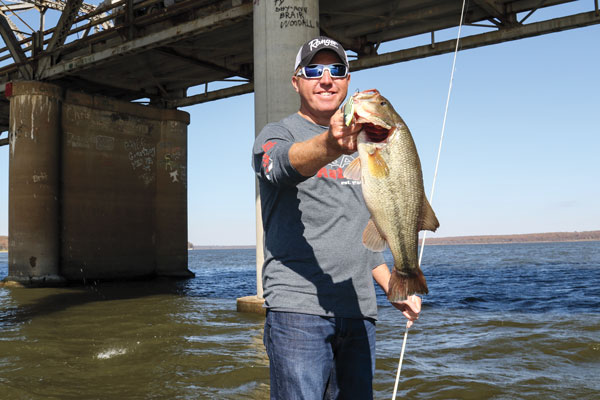
Photo by in-fisherman.com
いかがでしょうか。
橋というポイントを何人かのプロに聞くだけで、これほどの戦略が出てくるんですね。
最後まで読んでいただいた方は、おつかれさまでした。長かったですよね。
橋が架かる場所というのは、陸地と陸地が近付いたところに架けられやすいですから、地形的には狭くなる場所が多いと思います。狭くなる場所というのは流れが強くなりやすいため、ハードボトムになりやすく、水深も深くなりやすくなると思います。
そういう多くの要素が絡み合うことから、このような色々な戦略が生まれるのだと思います。
これが意味するのは、当たり戦略は常に一定ではないということだと思います。橋ひとつとってみても、色々なことを試して、その日の当たりパターンを探す。
反応のいいパターンが見つかったら、また時間を変えて入り直したり、川なのであれば橋はひとつではないでしょうから、他の橋でも同じ戦略が有効になると考えていいのだと思います。
橋は人気ポイントですから、他の人と少しでも違うことをやることが釣果に繋がるということが言えるかもしれません。
この記事の中で印象に残るものがあれば、ぜひ試してみてはいかがでしょうか。
それからひとつ注意することですが、橋の下で釣りをする場合、低い橋ですとフッキングした時やキャストした時にティップを橋桁に当ててしまいやすく、最悪の場合はロッドが折れてしまいますので、そのあたりはご注意ください。
一級ポイントだけにバイトは出やすいですから、フッキングの方向をあらかじめイメージしておいて、危ない橋を渡らないようにしましょう。
それでは、また。
毎度ありがとうございます!







